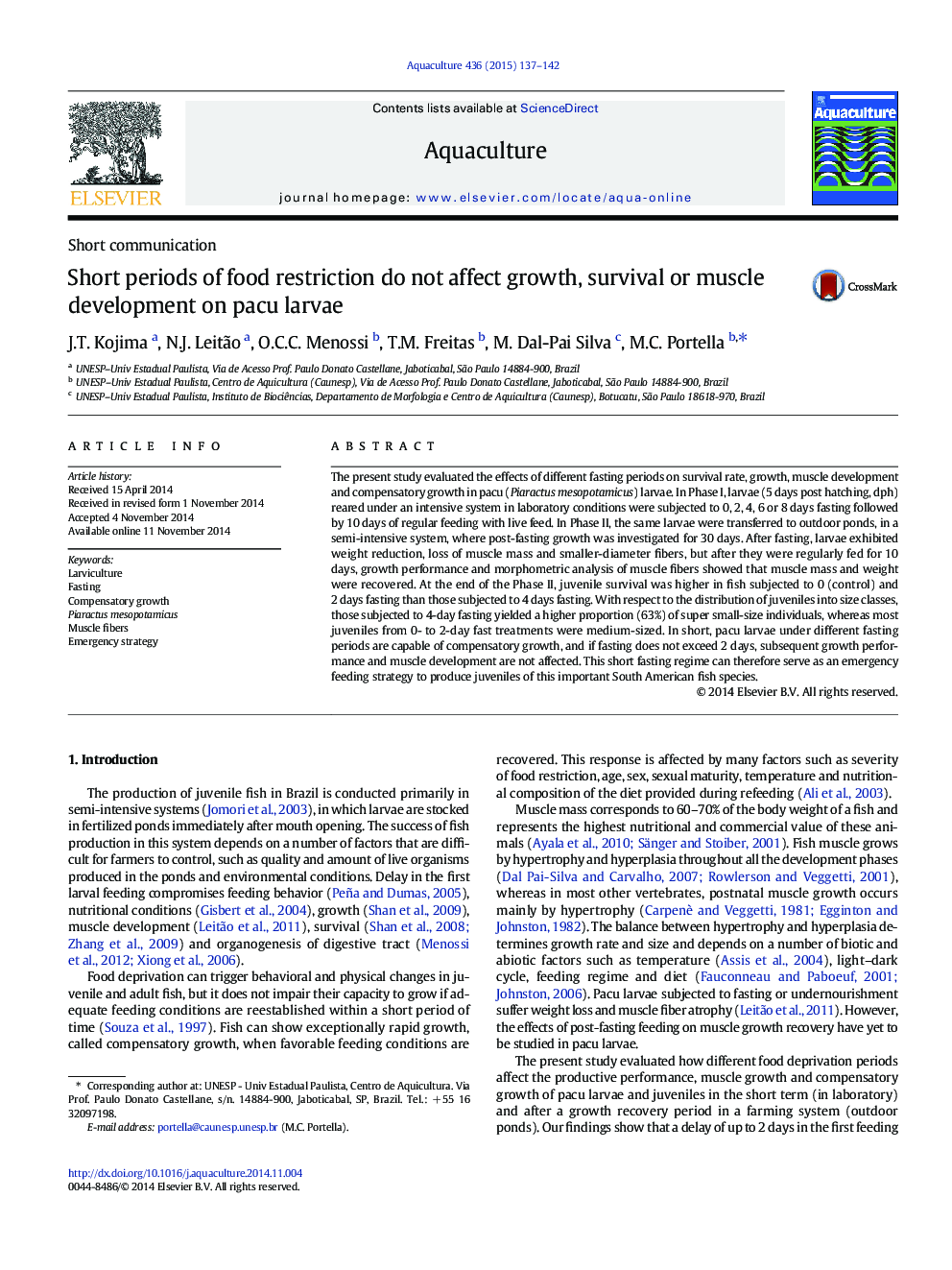| Article ID | Journal | Published Year | Pages | File Type |
|---|---|---|---|---|
| 8494821 | Aquaculture | 2015 | 6 Pages |
Abstract
The present study evaluated the effects of different fasting periods on survival rate, growth, muscle development and compensatory growth in pacu (Piaractus mesopotamicus) larvae. In Phase I, larvae (5Â days post hatching, dph) reared under an intensive system in laboratory conditions were subjected to 0, 2, 4, 6 or 8Â days fasting followed by 10Â days of regular feeding with live feed. In Phase II, the same larvae were transferred to outdoor ponds, in a semi-intensive system, where post-fasting growth was investigated for 30Â days. After fasting, larvae exhibited weight reduction, loss of muscle mass and smaller-diameter fibers, but after they were regularly fed for 10Â days, growth performance and morphometric analysis of muscle fibers showed that muscle mass and weight were recovered. At the end of the Phase II, juvenile survival was higher in fish subjected to 0 (control) and 2Â days fasting than those subjected to 4Â days fasting. With respect to the distribution of juveniles into size classes, those subjected to 4-day fasting yielded a higher proportion (63%) of super small-size individuals, whereas most juveniles from 0- to 2-day fast treatments were medium-sized. In short, pacu larvae under different fasting periods are capable of compensatory growth, and if fasting does not exceed 2Â days, subsequent growth performance and muscle development are not affected. This short fasting regime can therefore serve as an emergency feeding strategy to produce juveniles of this important South American fish species.
Related Topics
Life Sciences
Agricultural and Biological Sciences
Aquatic Science
Authors
J.T. Kojima, N.J. Leitão, O.C.C. Menossi, T.M. Freitas, M. Dal-Pai Silva, M.C. Portella,
